Welcome to my multi-part series on AI as a creator. In this series we aim to look at whether today’s artificial intelligence is capable of devising new works of arts.
We realize that Art is completely in the eye of the beholder, so what may be considered art to some is different than others. Our definition of art will be loose and we will use it to mean the following:
In today’s part of the series we are examining:
Will my AI cook for me?
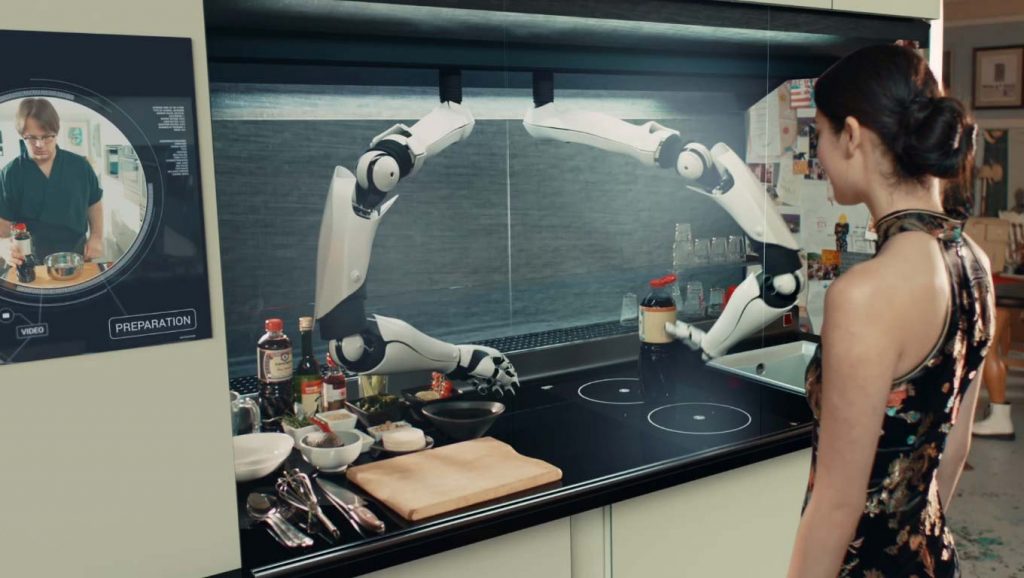
Creativity may be the ultimate moonshot for artificial intelligence. Already AI has helped write pop ballads, mimicked the styles of great painters and informed creative decisions in filmmaking. Experts wonder, however, how far AI can or should go in the creative process.
When we recently spoke to AI experts and thought leaders, their opinions varied as to whether AI has the potential to become a true creative partner or even the creator of solo works of art. While this debate will likely continue for some time, it’s clear that as digital content and delivery platforms continue infiltrating all forms of media and expression, the role of AI will undoubtedly expand.
Making machines creative?
Examples of these amazing applications are becoming more numerous, ranging from generating still images, to videos (i.e. deepfakes), or even generating videos from still images. The good news is, now you can see the Mona Lisa nodding and laughing.
Machines are developing the capacity to create rather than just learn. And here’s where it gets interesting—what if we can teach machines to be creative? If they can create an image, then why not a painting? And if they can create a sound, then why not a pleasing sonata? And if they can generate a logical sequence of words, then why not poems, tales, and novels?
We’re in the age of machine evolution. Have you ever looked at a cubist or an avant-garde painting and said to yourself, this better be created by machines? The sharp lines, the hazy features—all characteristics of these artifacts. We humans of the postmodern era are more inclined towards abstraction. So why not let machines take the lead—they love abstraction!
GANs making food
Step 1 – AI Generating Images of Food
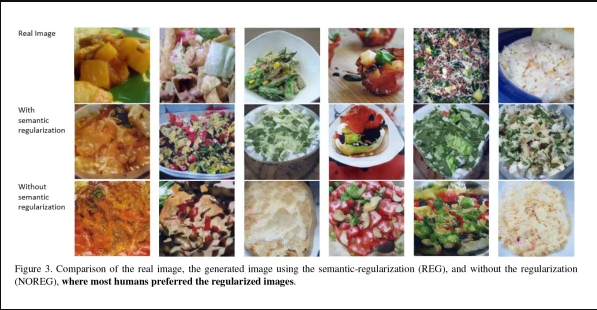
An Important Development In AI
But the new AI algorithms developed by computer scientists Ori Bar El, Ori Licht, and Netanel Yosephian at Tel Aviv University don’t require you to visually describe anything: It can generate fake photos of food from text recipes that list the ingredients and the method of preparation but don’t contain any visual description of how the final plate looks. The AI wasn’t allowed to read the title of the recipe to generate the image, as it may be descriptive enough on its own. It exclusively used the ingredients and the instructions.
This is an important test for the power of AI, as the paper published on Cornell University’s Arxiv.org site suggests. It shows a capacity for abstraction that we’ve assumed computers don’t have.
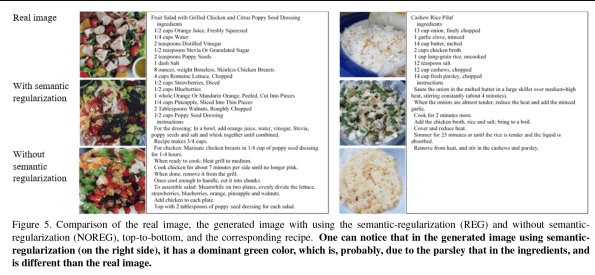
How it works
The method relies on Stacked Generative Adversarial Networks (GANs). The first AI in this network analyzes a recipe, from ingredients to finishing touches, by converting text to numeric vectors. The scientists call this process “text embedding,” and it’s designed to understand what’s on the page by semantic mapping to other pieces of content.
The second is a GAN that analyzes those vectors and compares them to other descriptions of more than 50,000 photos of food in the real world. After that learning process, the AI generates synthetic photos from new recipes. Granted, it does a better job at soups, rices, and enchiladas than other subjects like Sunday roasts or burgers, as the latter have more precisely articulated shapes. But the scientists explain this is only because they used low-resolution photos with poor illumination for the training.
In any case, this is a first in AI tech, and it will no doubt change the way we create and process imagery. Without even having to be visually descriptive, AI will eventually be able to analyze any text and create synthetic images from it. Brace yourself for the fake porn videos derived from body-part descriptions and lists of fetishes.
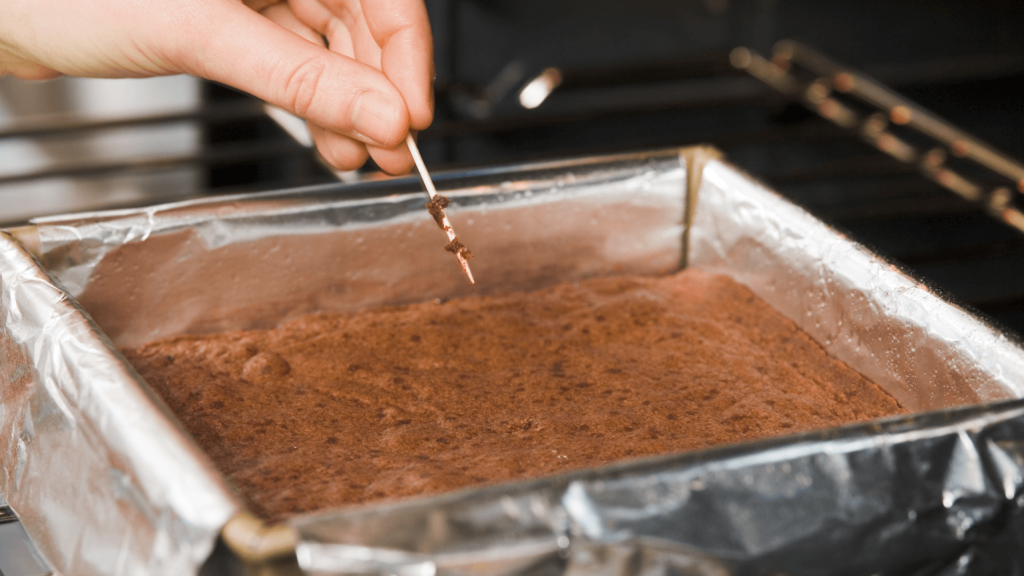
Wow – AI recipes are actually pretty bad
Pictured above is an abomination in the making, a lesson in why humans should never trust what a neural net says just because it’s based on math. It’s a neural net generated brownie recipe called Chocolate Baked and Serves, and its distinguishing feature is the CUP OF HORSERADISH it contains. It was so bad that my eyes watered as I removed it from the oven.
Creating a functional recipe requires an intimate understanding of ingredients and their interactions with one another, of heat and spice and time. Today’s neural networks have none of that.
I’ve seen neural net recipes that call for crushed sherry or 21 pounds of cabbage. One of my personal favorites is a recipe called “Small Sandwiches” that called for dozens of fussily chopped, minced, and diced ingredients – before chucking them in the food processor for 3 hours. Part of the problem has been neural nets with memory so terrible that halfway through the recipe they forget they’re making cake.
More recent neural nets like GPT-2, given better long-term memory and extensive training on a huge portion of the internet, can make recipes that are more likely to pass for the real thing. Use talktotransformer.com to prompt GPT-2 with “Black Forest Cake. Ingredients:” and the quantities and ingredients will be reasonable, even if the whole thing doesn’t quite work (generating a few examples in a row, I saw some Black Forest recipes that called for kneading the batter, and one that suggested pouring the batter into a toaster).
It’s seen enough cake that it can lean heavily on human-written recipes. If I prompt it with weirder recipe names – say, recipe names generated by a neural net – things get even stranger.
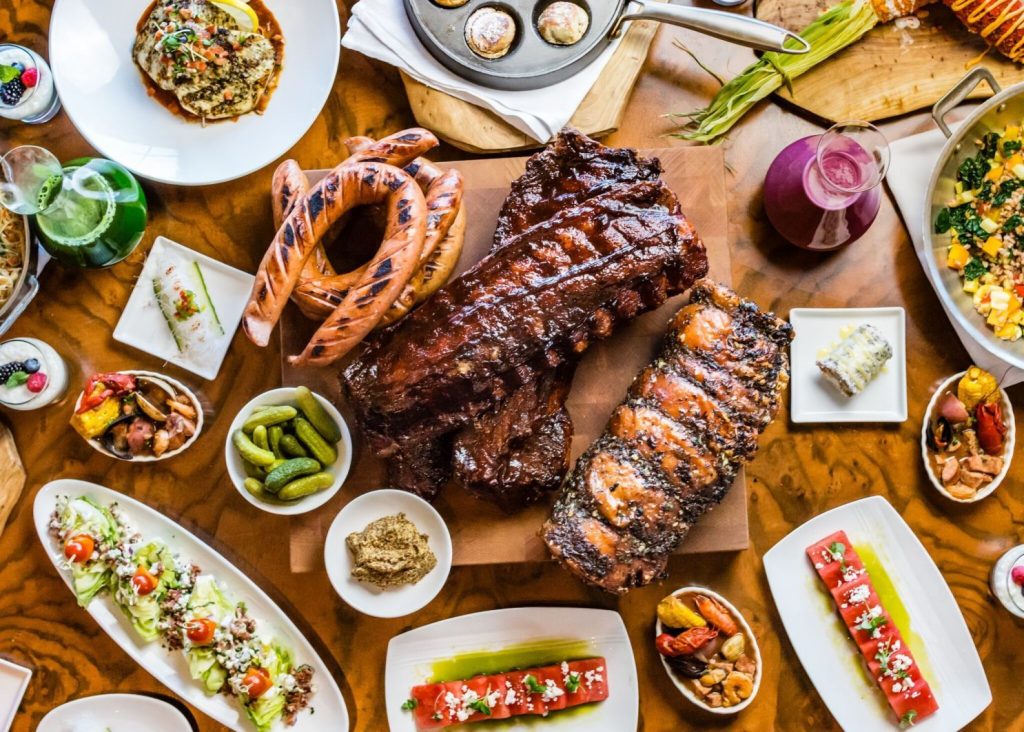
Let’s test it with a recipe title: “Completely Meat Circle”
Ingredients:
- three rashers of bacon,
- two pieces of bacon,
- a whole piece of ham,
- two slices of smoked cheddar,
- four slices of prosciutto,
- salt,
- pepper,
- allspice,
- black pepper,
- onion powder,
- smoked paprika and paprika,
- garlic powder,
- paprika,
- parsley flakes, and
- coriander.
You can also toast your own bacon at home: Wishing to pay homage to the original KFC’s recipe, we had one of the new wraps try to land on the BACON HOLE.
NOTE: the neural net doesn’t specify what to do with all that meat, and perhaps it’s better this way. Nor, again mercifully, does it explain what it means by BACON HOLE.
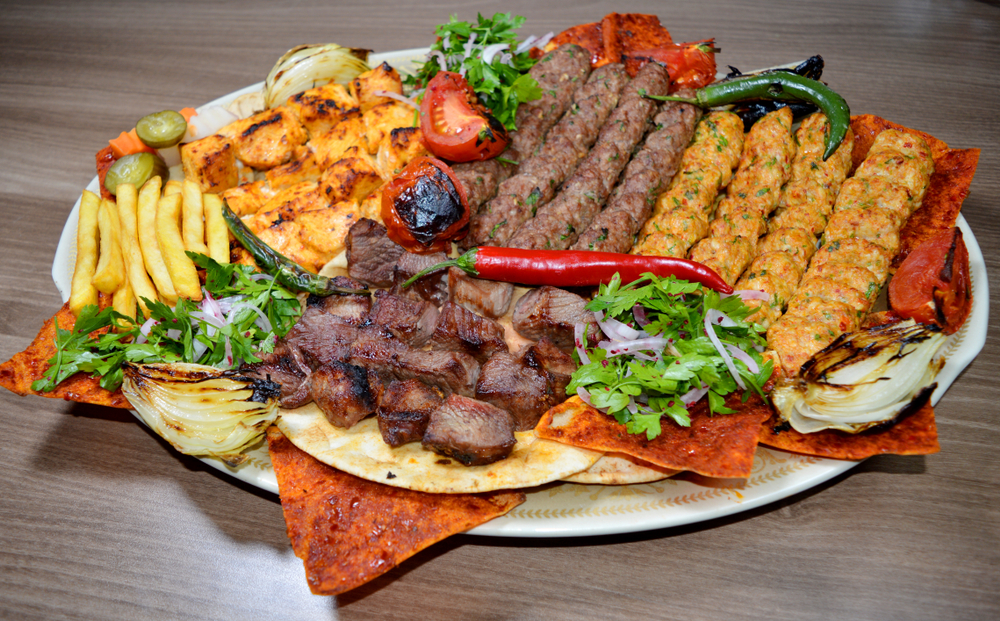
Summing it up
One can only hope the meat platter looks like the above when complete. Unfortunately, based on the recipe, you can see that food is not the best use of neural networks today. That is not to say that, given enough recipes and especially recipes we really like, it would do better. This was after all a very quick attempt at a neural net to create recipes, so much deeper neural networks trained on better data are likely to do much better.
So what do you do when all signs point to having to go to University to gain any sort of advantage? Unfortunately it’s the current state of affairs that most employers will not hire you unless you have a degree for even junior or starting jobs. Once you have that degree, coming to my Modular Lab Program, with 1000ml with our Patent Pending training system, the only such system in the world; is the only way to gain the practical knowledge and experience that will jump start your career.
Check out our next dates below for our upcoming seminars, labs and programs, we’d love to have you there.
